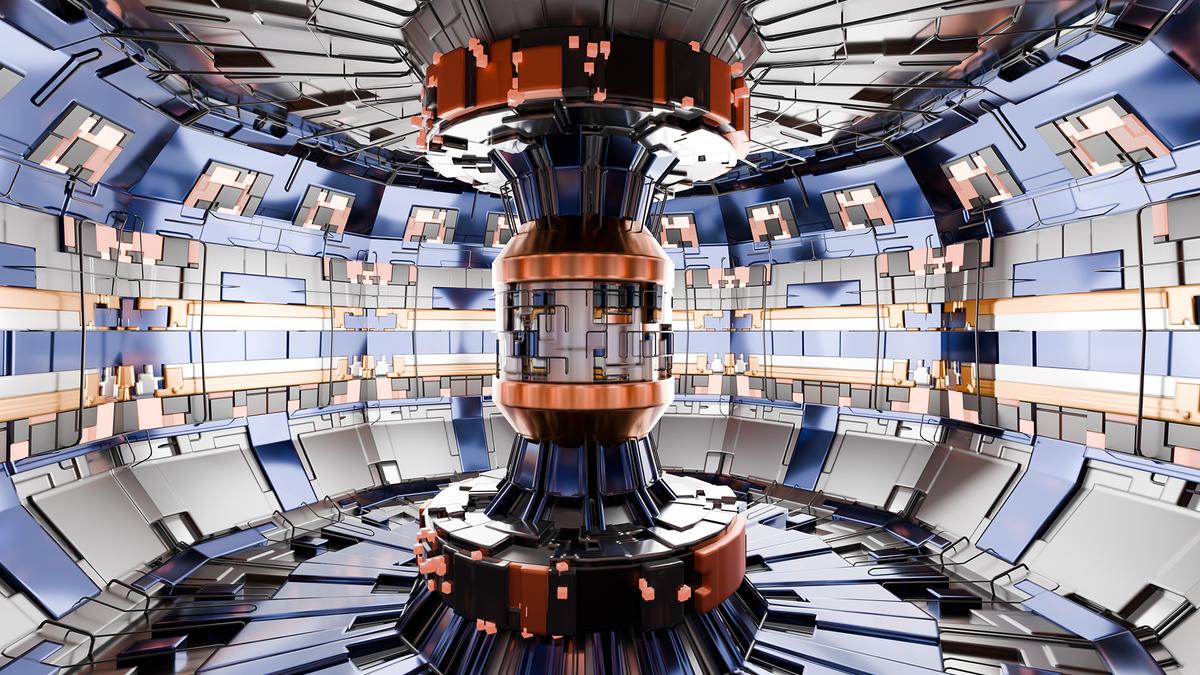Nuclear fusion has long been hailed as the holy grail of clean energy in a world grappling with climate change and energy security concerns. Recent breakthroughs and ambitious projects worldwide are tantalizingly bringing this once-distant dream closer to reality.
June 2024 marked a significant milestone when Energy Singularity, a Chinese fusion energy company, unveiled the world’s first high-temperature superconducting tokamak reactor in Shanghai.
Dubbed HH70, this compact fusion reactor promises to be smaller and more cost-effective than its conventional counterparts, potentially operating at just two percent of their volume.
This announcement is the latest advancements that have reinvigorated the fusion energy field. In December 2022, the National Ignition Facility (NIF) at Lawrence Livermore National Laboratory in the US achieved a historic breakthrough by surpassing the ignition threshold. They produced 3.15 megajoules of energy output from a 2.05 megajoules input, later improving this to 3.88 megajoules – the highest recorded output.
The race to harness fusion energy is wider than the US and China. Despite being slated for decommissioning, the UK’s Joint European Torus (JET) facility set a new record earlier this year by generating 69 megajoules of energy from just 0.2 milligrams of fuel in five seconds. Meanwhile, Japan’s JT-60SA, the world’s largest fusion reactor, achieved its first plasma in November 2023 after 15 years of construction and testing.
China’s Experimental Advanced Superconducting Tokamak (EAST) reactor, nicknamed the ‘artificial sun,’ has been pushing boundaries since 2006. Last year, it remained operational for an impressive 403 seconds. The country is now developing the next-generation China Fusion Engineering Test Reactor (CFTER) to create the world’s first fusion energy demonstrator.
Perhaps the most ambitious project in the field is the International Thermonuclear Experimental Reactor (ITER), a collaborative effort involving 35 nations. Under construction in southern France, ITER aims to be the largest of over 100 fusion reactors built in the past seven decades. Despite delays pushing its first plasma target to 2035, ITER’s goals remain lofty: to produce 500 MW of heat from a 50 MW input for up to 600 seconds.
The potential benefits of fusion energy are immense. Unlike its fission counterpart, fusion produces no long-lived radioactive waste, instead generating inert helium gas. It’s incredibly efficient—just 1 kg of fusion fuel could produce energy equivalent to 10 million kg of fossil fuel without carbon emissions. Fuel for fusion, derived from water and lithium, is abundant and will raise no energy security concerns for millennia to come.
Safety is another key advantage. The difficulty initiating and sustaining fusion reactions means the risk of meltdowns, a major concern with fission reactors, is virtually nonexistent in fusion plants.
However, fusion technology has its challenges.
While often compared to replicating the Sun’s energy production on Earth, the conditions differ significantly. Earthbound reactors must use heavier hydrogen isotopes, resulting in neutron streams that require extensive shielding. This process can make reactor materials radioactive, although the decay occurs much faster than with fission waste.
Energy efficiency remains a hurdle. Maintaining the extreme temperatures necessary for fusion and cooling the equipment consumes significant power. The recent decommissioning of the JET reactor in the UK, estimated to cost $300 million and produce 3,000 cubic meters of radioactive waste, highlights the complexities of managing these facilities.
The viability of fusion as a commercial energy source is still in question. For fusion to be economically feasible, it must achieve a Q value (ratio of heat output to input) of 25 – a distant target given current achievements. However, the rapid progress in recent years has caused optimism.
Critics argue that the resources poured into fusion research could be better spent improving existing renewable technologies like wind and solar. Yet, proponents point out that these technologies were once considered unviable and only reached their current state through sustained investment and research.
Nuclear fusion represents a tantalizing possibility as the world races to decarbonize and secure sustainable energy sources. While it may not be ready to power our grids tomorrow, the recent cascade of breakthroughs suggests that fusion’s moment might arrive sooner than we think.
With continued investment and international collaboration, the dream of limitless, clean energy could become a reality, revolutionizing our power generation and climate change mitigation approach.
As we stand on the brink of potentially world-changing breakthroughs, it’s clear that the fusion dream is more alive than ever. The coming decades may well determine whether this “energy of the stars” will indeed light up our future.
NEWSLETTER
The Blueprint Daily
Stay up-to-date on engineering, tech, space, and science news with The Blueprint.
By clicking sign up, you confirm that you accept this site's Terms of Use and Privacy Policy
ABOUT THE EDITOR
Deena Theresa A creative writer and journalist with a Master's degree in International Journalism, Deena's repertoire of work includes writing for Indian dailies like The New Indian Express and reading news on primetime television for a regional broadcaster. Having grown up in three countries, this third-culture kid feels that home is everywhere, and nowhere. Deena loves to dabble in music and art and believes that the latter and science share a symbiotic relationship.






0